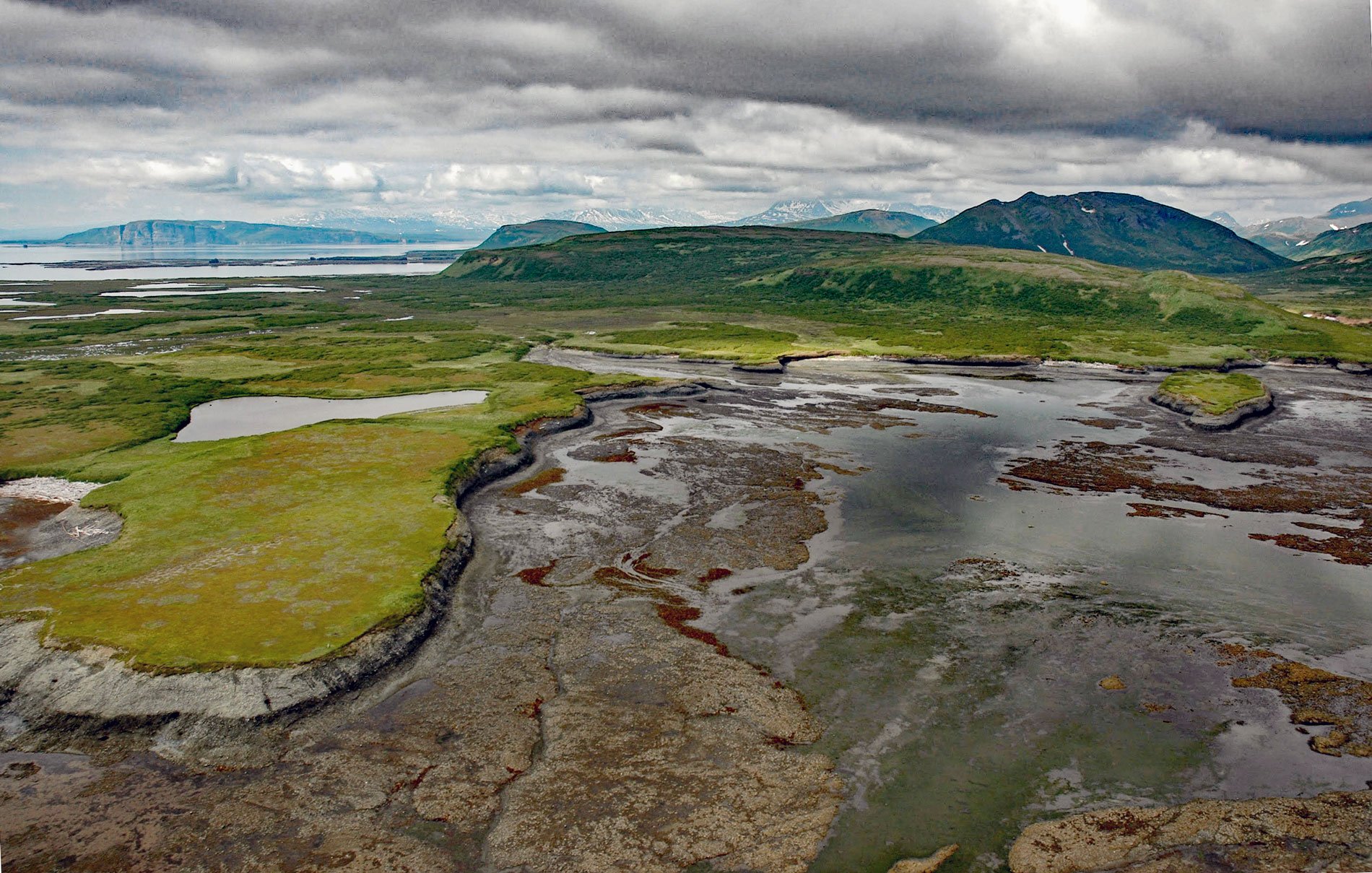Chenik was a historical community at the mouth of Chenik Creek, between Chenik Lake to the west and Chenik Head to the east, on the west shore of Kamishak Bay, about 98 miles (158 km) northeast of King Salmon and 98 miles (158 km) southwest of Homer, Alaska. The Sugpiaq Alutiiq name was first reported in 1923 by Kirtley F. Mather during a mineral survey by the U.S. Geological Survey. Kamishak Bay is a broad indentation at the base of the Alaska Peninsula near the mouth of Cook Inlet and at the northeast end of Shelikof Strait and Chenik Head is a peninsula that extends roughly 1 mile (1.6 km) into Kamishak Bay from the mainland. Chenik Creek starts from the outlet of Chenik Lake at an elevation of about 160 feet (49 m) and flows generally northeast for 2 miles (3.2 km) to a tidal flat on Kamishak Bay locally known as Chenik Lagoon. The Bruin Bay Fault is roughly aligned with Chenik Creek and separates the Naknek Formation to the southeast from the Talkeetna Formation to the northwest. The younger Naknek Formation developed during the late Jurassic and consists largely of sandstone, conglomerate, and siltstone. The older Talkeetna Formation developed during the early Jurassic and consists mostly of volcanic flows, breccia, tuff, and minor sandstone and shale, often somewhat metamorphosed.
In 1796, a Russian-American Company ship entered Kamishak Bay and was damaged on one of the numerous reefs and had to be abandoned. In 1890, there were numerous camps of sea otter hunters along the shore of Kamishak Bay between Cape Douglas and Augustine Island. The camps were occupied by Yup’ik and Sugpiaq Alutiiq hunters, some of whom traveled over 200 miles (323 km) from villages in Bristol Bay. They crossed the tundra in the spring before the snow melted, carrying their belongings and skin boats on sledges, and hunted sea otters until the first snows of winter allowed them to return home. Chenik village was most likely used as a seasonal camp for fishing, hunting, and trading by families from Lake Iliamna villages. In particular, beluga whales were historically hunted in the spring when they fed on spawning herring close to shore. In 1923, only one family lived at Chenik and by 1951, the village was abandoned. In 1967, the McNeil River State Game Sanctuary was established to protect the numerous Alaska brown bears that frequent the area, and in 1991, protection was expanded with the establishment of the McNeil River State Game Refuge which includes Chenik Creek.
Chenik Lake was historically a major sockeye salmon producer before the 1940s when annual runs approached 150,000 fish. After that time, sockeye salmon runs declined to less than 500 fish, forcing the complete closure of the fishery in 1952. In 1964, the Alaska Earthquake uplifted the mouth of Chenik Creek creating a waterfall into Chenik Lagoon, effectively blocking salmon from ascending the creek. From 1986 to 1996, sockeye salmon fry were annually stocked in Chenik Lake, and the mouth of Chenik Creek was modified to allow fish passage. Beginning in 1987, and from 1989 through 1991, Chenik Lake was fertilized to enhance phytoplankton growth. Salmon returns in the late 1980s accounted for nearly 50% of the total Lower Cook Inlet commercial sockeye salmon catch in some years, approaching the historical record high runs of the 1930s. However, beginning in 1989, Chenik sockeye runs declined due to an outbreak of a virus in the watershed, and the stocking program was discontinued after 1996. In 2004, commercial fishing was opened resulting in a catch of approximately 33,000 sockeye, followed by catches of 47,000, 12,000, and 162,000 sockeye over the next three seasons, respectively. Today, all runs of sockeye salmon in the Chenik watershed are the result of natural production. Read more here and here. Explore more of Chenik and Kamishak Bay here:

